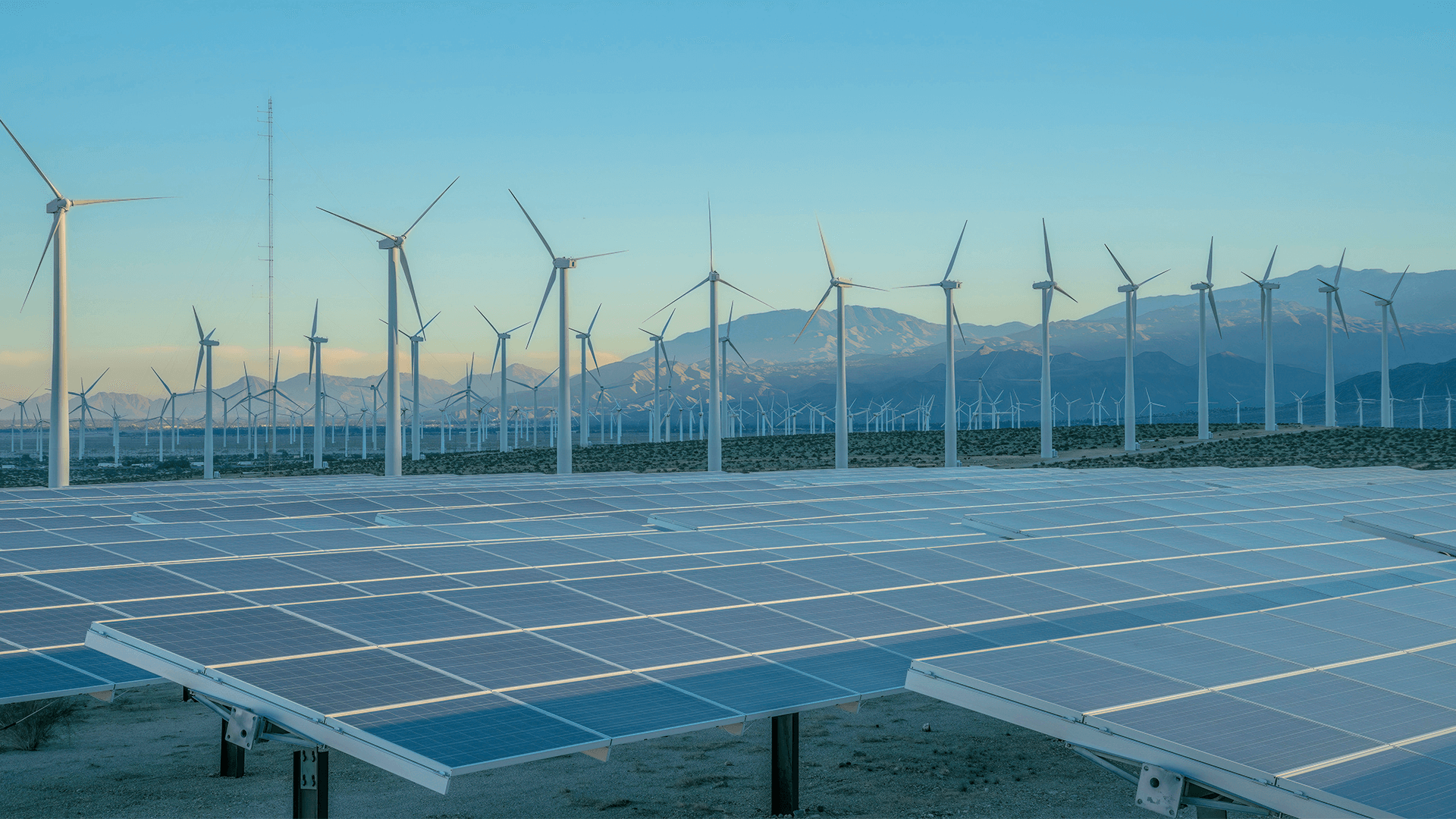
Physical & transition risks of climate change
by Mel George, Ph.D. Candidate and Research Assistant for the Center for Global Sustainability (CGS)
Are we adequately estimating the risks of climate action or inaction? Does the mitigation pathway matter for transition risks?
New research published in Nature Climate Change demonstrates a comprehensive framework for comparing the transition risks of decarbonizing the economy and the physical risks of increasing temperature. The parallel comparison of the short-term transition risks and longer-term physical risks and understanding the underlying drivers are useful for contextualizing tradeoffs between different mitigation pathways.
The paper uses the classification of risks developed by the Taskforce on Climate-related Financial Disclosures (TCFD): “physical” risks stemming from a warming world, and transition risks emanating from the shift to a low-carbon economy. The physical risks quantified in the study include regional hazard and impact attributes, measuring likelihoods of river floods, heatwaves, agricultural and hydrological droughts, plus measures of crop heat stress and yield losses. These risks are shown to be mainly dependent on the temperature, with higher temperature scenarios showing greater likelihoods of extreme events. Mitigation policies that seek to reduce temperature rise could lead to a different form of risk - transition risks. They are derived from rapid decarbonization and underlying changes to the economy and include economy-wide & sectoral emissions intensity, fossil fuel capacity reduction, carbon price & abatement costs, and impacts on electricity and food prices. Scenarios with similar long-term physical risks could yet have very different near-term transition risks.
The physical risks are gradual and reveal dominant effects after 2050, while the transition risks are near term (e.g. next 10-20 years). This paper analyzes 11 scenario pathways varying by end-of-century warming ranging from approximately 1.5°C to 4°C. The scenarios were modeled using a state-of-the-art global Integrated Assessment Model of energy, land, water, & climate, the Global Change Analysis Model (GCAM). Physical risks were computed at 0.5°x0.5° resolution (using the Mac-PDM.09 global hydrological model) and averaged for a region and year; hence estimating chronic risks. Transition risks were estimated from GCAM simulations.
While physical risks are mainly dependent on the temperature, the transition risks are shown to be contingent on technological, policy, and socioeconomic factors within the scenarios. These findings on risks are largely consistent with the literature. In addition, the data allows additional explorations into how the risks vary within and between pathways and the drivers of those risks. The findings are particularly relevant to the financial services community, governments, policymakers, and civil society, as elaborated in the subsequent sections.
Financial communities need to value both forms of risk
The paper is primarily targeted towards the financial sector and central banks as a first step in estimating the business & household-level financial risks and liability costs of climate change. The financial risks from physical risks would be dire and linked to asset devaluation in long-term mortgage books (~30 years), effects on pension fund investments, health impacts and insurance costs, and stagflation due to lost labor hours and reduced agriculture productivity, leading to increased food prices.
Significant near-term transition risks to specific business sectors could result from carbon prices and regulations, potential stranding of carbon-intensive assets such as coal-fired power stations, petroleum refineries, or blast furnaces in steel making. This would have a ripple effect due to loss of capital and jobs in coal power, upstream distribution, mining, or oil-drilling sectors, as well as impacts to those communities where such activity occurs. Transition risks can negatively affect utility companies that need significant investments in supply, storage & transmission to decarbonize their grids. Higher energy and food prices can undermine the energy and food security in households, leading to increased risks of insolvencies. There could also be amplified risks due to cascading losses from inter-linked investments or insurance.
The financial services community needs to grasp that the technology and sector-specific risks vary depending on the chosen decarbonization pathway. A nuanced assessment of risk is required instead of assuming that all pathways leading to the same temperature imply similar risks. A holistic consideration of physical & transition risks would enable finance and lending agencies to invest wisely and avoid undervaluation or discounting of longer-term physical risks in investment decisions today - which would affect technology choices in future pathways. The capitalist financial model can thus be a significant enabler of enhanced and balanced climate mitigation action.
The transition opportunity: Valuing and balancing risks can increase mitigation ambition
The lack of a simultaneous comparison of physical and transition risks in IPCC Working Group Reports leads to the potential oversimplification of climate policy to a false binary choice between mitigation action today and procrastination or inaction. Physical risks increase manifold for scenarios from 2 - 4°C. Governments and policymakers need to value the avoided physical risks as benefits of mitigation action.
With fragmented global effort sharing, the delayed action increases transition risks after 2030 while also increasing the physical risks due to higher mid-century temperatures. This emphasizes the need for early, coordinated global action. An example is India which faces increased risks of drought for its large population in higher temperature scenarios, while also facing higher transition risks after 2030 in a scenario assuming reduced mitigation ambition in this decade. Accounting for the physical risks can thus increase national and global ambition in climate policy.
Transition and physical risks may not be inevitable hazards
The transition risks vary by the choice of decarbonization pathway, while the physical risks are more dependent on long-term temperature changes. Even scenarios aimed at the same temperature goal (with similar physical climate risks) can have considerably different transition risks in the near term. A 2°C scenario with no land-use emission policy shifts the decarbonization burden to the energy sector leading to very high transition risks in 2030 compared to a more balanced 2°C scenario where all sectors contribute.
The fact that transition risks can vary between pathways based on technology choices and socioeconomics implies that these risks are by no means a given, and are not fundamental risks. Such risks need not turn into hazards and can, therefore, be addressed by policy choices related to socioeconomics (such as better redistribution, lifestyle changes, energy demand reduction, etc.). Physical risks remain in 2°C pathways, and planners need to consider financing adaptation costs and insurance as well.
Considering nuance and distributional impacts
The paper takes a step back from organizations and methods which postulate a single “right answer” to financial risks and asset values. It provides additional value through transparent modeling with insights on nuances between pathways, the drivers of risks, the uncertainties around climate variables, non-linearities, temporality, and inter-sector linkages.
Transition and physical risks also go beyond economic characterizations and include societal risks. Moving towards higher climate ambition from 2° to 1.5°C increases transition risks which may be magnified for some communities in combination with socio-economic deprivations. Mitigation policy involves risk transference between communities and analyzing the distributional dimensions along socioeconomic lines would be imperative for future work. Supply-side investments in the financial sector need to go with demand-side policy choices driven by governments and civil society.
To sustain climate policy, the journey matters as much as the destination.
The paper came out of a collaboration between researchers at the Center for Global Sustainability (CGS) at the University of Maryland and researchers at Grantham Institute at Imperial College London, the Universities of Bristol, Leeds & Reading, and the UK Met Office Hadley Center. The research was supported by the ClimateWorks Foundation.
Read the full paper, access the detailed supplementary information (including methods and assumptions, additional results), access a streamlined summary in this presentation, or read perspectives from our co-authors.



